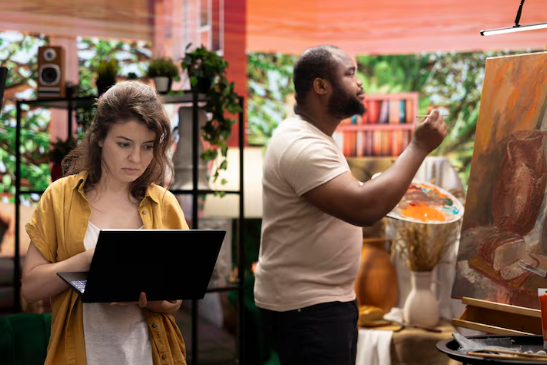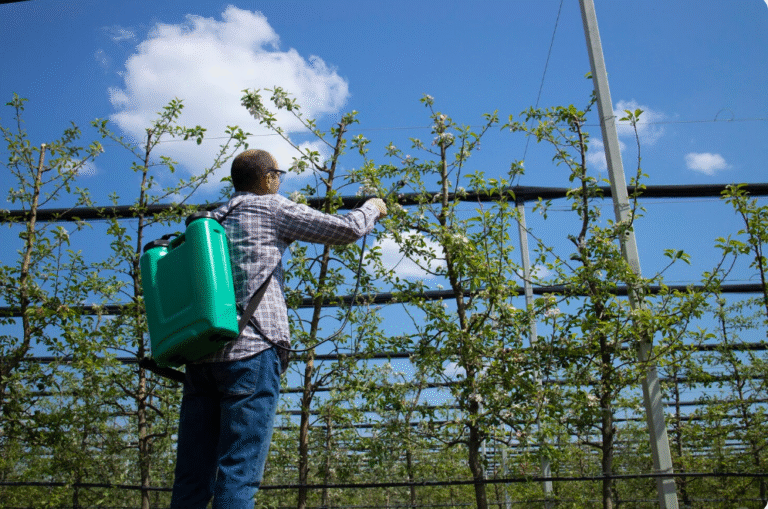Why Pool Installation in Las Vegas Is Easier Than You Think

Understanding The Cost Of Custom Pools In Las Vegas
Thinking about getting a custom pool installed in Las Vegas? It’s a fantastic idea, especially with our desert heat. But before you start dreaming of splashing around, let’s talk about the money side of things. Understanding the costs involved is key to a smooth pool installation in Las Vegas. It’s not just about the initial price tag; there are other expenses to consider down the road.
Factors Influencing Custom Pool Pricing
The price of your backyard oasis can really vary. Several things play a big role:
- Size and Depth: Bigger pools naturally cost more to build and fill.
- Materials: The type of finish you choose, like plaster, tile, or pebble, impacts the price.
- Features: Want a waterfall, a spa, or fancy lighting? These add to the overall cost.
- Terrain: If your yard needs a lot of work to level out or has tricky access, that can increase labor costs.
- Permits and Labor: Don’t forget the fees for permits and the skilled workers who will build your pool.
Budgeting For Installation And Materials
When you’re budgeting, think about the whole picture. A basic in-ground pool might start around $25,000, but custom designs with all the bells and whistles can easily go much higher. For example, a 16′ x 32′ in-ground pool could range from $46,000 to $67,000. Above-ground pools are generally less expensive, starting around $2,000 and going up to $10,000 or more with extras.
Here’s a general idea of what some components might cost:
| Component | Estimated Cost Range |
| Excavation | $1,770 – $13,830 |
| Decking | $3,000 – $5,000 |
| Basic Equipment | $199 – $1,500 |
| Add-Ons (Lights) | $500 – $10,000+ |
Ongoing Maintenance Expenses
Once your pool is built, the costs don’t stop. You’ll need to factor in regular upkeep. In Las Vegas, the sun and heat mean your pool will need consistent care. Expect to spend roughly $2,000 to $2,500 annually for chemicals, cleaning, and minor repairs. If you opt for a saltwater system, the monthly costs can be lower, around $45. However, if you choose a vinyl liner pool, you might be looking at around $1,325 per year for running costs, and remember that vinyl liners typically need replacing every 10 years. Concrete pools, while durable, might need resurfacing around the same time, with annual running costs around $2,750.
Keeping your pool clean and well-maintained not only makes it look good but also helps prevent costly repairs down the line. It’s about protecting your investment and making sure you can enjoy it for years to come.
Don’t forget about potential costs for heating, safety features like fences (which can add $1,500 or more), and fun accessories. Planning for these will help you avoid any surprises.
Designing Your Dream Backyard Oasis
So, you’re thinking about a pool in Vegas? Awesome! It’s not just about picking a shape, though. This is where you get to really make it your own, turning that patch of desert into your personal slice of paradise. Think about how you’ll actually use the space. Are you picturing big parties with tons of friends, or quieter evenings with a book and a cool drink? Your answers will steer the design big time.
Pools come in all sorts of shapes and sizes these days. You’ve got your classic rectangles, which are great for laps or just floating around. Then there are freeform shapes that can look really natural, almost like a lagoon. And don’t forget about the different depths and levels. A shallow baja shelf, sometimes called a sun shelf, is perfect for lounging in a bit of water, maybe with some chairs. Or maybe you want a deeper end for cannonballs (if that’s your thing!).
Here’s a quick look at some popular choices:
- Rectangular Pools: Great for swimming laps and a timeless look.
- Freeform Pools: Offer a more organic, natural feel, blending with landscaping.
- Plunge Pools: Smaller, deeper pools for cooling off quickly.
- Infinity Pools: Give the illusion of water spilling over the edge, often used with a view.
Personalizing Your Custom Pool Design
This is where the fun really starts. You can pick out the exact tile for your waterline – no more boring blue if you don’t want it! Maybe you want something with a bit of sparkle or a unique color that pops against the desert landscape. The material for the pool’s interior matters too; it affects the water color and how it feels underfoot. Think about the coping, that’s the edge around the pool. Do you want something smooth and modern, or more of a natural stone look?
Don’t just pick what looks good in a magazine. Think about how the sun hits your yard at different times of day. Consider the shade from existing trees or structures. A good design works with your environment, not against it.
Adding Water Features And Lighting
Want to add some extra flair? Water features can make a huge difference. Think about a small waterfall cascading into the pool, or maybe some bubblers that shoot water up from the shallow end. These add sound and visual interest. And lighting? It’s a game-changer for evening use. You can get lights that change color, or subtle spotlights that highlight landscaping around the pool. It totally transforms the mood after the sun goes down.
| Feature | Description |
| Waterfalls | Adds soothing sounds and visual appeal. |
| Bubblers | Fun for kids and adds a playful element. |
| LED Lighting | Customizable colors for ambiance and safety. |
| Fire Features | Adds warmth and a sophisticated touch. |
The Pool Installation Process Simplified
So, you’re thinking about getting a pool in Las Vegas? It might sound like a huge headache, but honestly, it’s more straightforward than you’d imagine. Let’s break down what actually happens from start to finish.
Navigating Permits and Excavation
First things first, you can’t just start digging. Your pool builder will handle getting the necessary permits from the city. This is important because it means everything will be up to code. Once that’s sorted, the real work begins with excavation. This is where they dig out the space for your pool. It’s a pretty big step and can take a few days, depending on the size and shape of your pool. They’ll bring in heavy machinery to get the job done.
Decking and Equipment Installation
After the hole is dug and the pool shell is in place (whether it’s vinyl, fiberglass, or concrete), it’s time for the surrounding area. This is where the decking comes in. You’ll choose materials like pavers, concrete, or stone to create the area around your pool. At the same time, the pool’s equipment is installed. This includes the pump, filter, and heater – the stuff that keeps your pool clean and at the right temperature. Getting these components right is key to a hassle-free pool experience.
Timeline for Your New Pool
How long does all this take? Well, it varies. A basic pool installation might take anywhere from 3 to 8 weeks. However, this can change based on the weather, the complexity of your design, and how busy the contractors are. Sometimes, you might have to wait a bit between steps if subcontractors aren’t available. It’s good to have a realistic expectation and communicate with your builder about the schedule. Here’s a rough idea:
| Stage | Estimated Time |
| Permits & Excavation | 1-2 Weeks |
| Plumbing, Rebar, Electric | 1-2 Weeks |
| Shell Installation | 1-2 Weeks |
| Decking & Equipment | 1-2 Weeks |
| Finishing & Filling | 1 Week |
Building a pool is definitely a process. There will be days when it feels like it’s taking forever, and maybe some unexpected little issues pop up. But seeing the finished product, that backyard oasis you’ve dreamed of, makes all the waiting and planning totally worth it. It’s about creating a space for fun and relaxation for years to come.
Choosing The Right Pool Materials
So, you’re thinking about getting a pool in Las Vegas. That’s awesome! But before you get too far, let’s chat about what your pool will actually be made of. This is a big decision, and it really affects how your pool looks, how long it lasts, and even how much work it is to keep it looking good. It’s not just about the shape or the size; the materials are super important.
Vinyl Liner Pool Considerations
Vinyl liner pools are often a more budget-friendly option upfront. They come with a pre-made liner that’s fitted inside the pool structure. Think of it like a big, durable bag that holds all the water. The big plus here is the variety of patterns and colors you can get for the liner, which can really change the whole look of your pool. However, these liners aren’t indestructible. They can get punctured or torn, especially if something sharp gets into the pool, or from regular wear and tear over time. Replacing a liner can be a bit of a project, and it’s an expense to keep in mind down the road. Also, the chemicals used to keep your pool clean can sometimes affect the liner over many years, potentially causing it to fade or become brittle.
Fiberglass Pool Advantages
Fiberglass pools are pretty neat. They’re actually made in a factory as a single shell and then delivered to your home. This usually means a quicker installation process compared to other types. Because they’re non-porous, they’re really resistant to algae growth, which is a huge win for keeping your pool clean with less scrubbing. Plus, the smooth surface is comfortable to walk on and easy on swimsuits. They’re also quite durable and can last a long time. The main thing to consider with fiberglass is that your size and shape options are limited to what the manufacturers offer. You can’t really customize the dimensions or add unique features like tanning ledges as easily as you might with other types.
Concrete Pool Durability
Concrete pools, often called gunite or shotcrete pools, are the custom builders’ playground. You can literally design them in almost any shape, size, or depth imaginable. This is where you get the most freedom to create something truly unique. They are built on-site, layer by layer. The downside? They typically take the longest to build. Concrete pools also require more upkeep. The surface can be rougher, and they’re more prone to developing algae if not maintained properly. You’ll also need to factor in periodic resurfacing over the years to keep them in top shape. This type of pool offers the ultimate in customization but comes with a higher initial cost and more involved maintenance.
Choosing the right material is a balancing act. You’re weighing upfront costs against long-term durability, maintenance effort, and the aesthetic you’re going for. It’s worth taking the time to look at samples and talk through the pros and cons with your pool builder to make sure you pick the best fit for your Las Vegas backyard.
Enhancing Your Pool Experience
So, you’ve got your custom pool all planned out and ready to go. That’s awesome! But before you dive in, let’s talk about making it even better. It’s not just about the water; it’s about the whole vibe and how you’ll actually use it.
Heating Options For Year-Round Enjoyment
Las Vegas gets hot, sure, but even here, the evenings can cool down, and you don’t want your pool season to end just because the sun goes down. Plus, those cooler months can still be enjoyable with the right setup. You’ve got a few ways to keep that water toasty:
- Electric Heat Pumps: These are pretty common and work like a reverse air conditioner, pulling heat from the air to warm your pool. They’re generally more energy-efficient than resistance heaters, especially in milder climates. Think of them as a steady, reliable way to keep things comfortable.
- Gas Heaters: If you want your pool heated up fast, a gas heater is the way to go. They’re great for quick heating needs or if you’re using your pool sporadically. Just be aware that they tend to use more energy (and cost more to run) than heat pumps.
- Solar Heaters: This is a fantastic, eco-friendly option, especially in sunny Las Vegas. Solar panels on your roof or nearby capture the sun’s rays to heat the water. It’s a lower operating cost, but the initial setup can be more, and it’s dependent on how much sun you get.
Choosing the right heating system depends on how quickly you need the water to be warm, how often you’ll be using it, and your budget for both installation and ongoing energy costs.
Safety Features For Peace Of Mind
Having a pool is a blast, but safety is always number one, especially if you have kids or pets around. It’s not just about keeping an eye on things; there are some smart features you can add.
- Pool Fencing: A sturdy fence with a self-closing, self-latching gate is a must-have. It creates a physical barrier that keeps little ones and animals out when the pool isn’t in use.
- Pool Covers: Beyond just keeping debris out, automatic pool covers offer a significant safety benefit. When closed, they can support the weight of a person or animal, preventing accidental falls into the water.
- Alarms: You can get alarms for your gates, or even surface alarms that detect movement in the water. These act as an extra layer of alert if someone unexpectedly enters the pool area.
Building a pool is a big project, and it’s easy to get caught up in the fun parts like tile and water features. But taking the time to think about safety up front can save a lot of worry down the line. It’s about creating a space that’s not just beautiful, but also secure for everyone.
Accessorizing Your Pool Area
Once the pool itself is ready, it’s time to think about the fun stuff – the accessories that make your backyard feel like a resort. These are the things that really turn your pool area into a place you’ll want to spend all your time.
- Lounging Areas: Think comfortable chaises, shaded cabanas, or even built-in benches around the pool. You need places to relax and soak up the sun (or the shade!).
- Outdoor Kitchen/Bar: If you love to entertain, an outdoor kitchen or a swim-up bar can be a game-changer. Imagine serving drinks and snacks without ever having to go inside.
- Entertainment Systems: Outdoor speakers for music, or even a waterproof TV for movie nights by the pool, can add a whole new level of enjoyment. And don’t forget lighting – not just for safety, but to set the mood for evening swims.
When To Build Your Custom Pool
So, you’re thinking about getting custom pools installed in your Las Vegas backyard. That’s awesome! But when’s the best time to actually pull the trigger on this project? It’s not as simple as just picking a date. You’ve got to think about a few things to make sure it all goes smoothly and you get the most bang for your buck.
Considering Seasonal Construction Benefits
Each season has its own pros and cons when it comes to building a pool. Spring is popular because everyone wants their pool ready for summer. But, this means contractors are super busy, and you might pay more. Plus, spring weather can be unpredictable – think rainstorms messing with the construction site. Summer building can mean drier ground for the crew, which is good. You might also find better deals because it’s not as busy. The downside? Super hot weather can slow things down, and you’ll be finishing your pool right as fall rolls in, meaning you won’t get to use it much until next year. Fall construction is similar to summer, with potentially drier ground and easier contractor scheduling. It can also be cheaper. Winter building might be the most budget-friendly option. Contractors often have more open slots, giving them time to really focus on your project. You might even get a warm spell in spring and be swimming not long after construction wraps up. However, winter weather, even in Vegas, can be a gamble and might cause delays.
Aligning Build Time With Your Budget
Let’s be real, cost is a big factor. If you’re trying to save some cash, building during the off-peak seasons like fall or winter could be your best bet. Contractors might offer lower prices when they’re not swamped with requests. You’ll need to weigh this against when you actually want to start using your pool. If your heart is set on summer swims, starting construction in the fall or winter is the way to go. If you can wait, building during a less popular time might mean a more relaxed process and potentially a lower overall cost.
| Season | Potential Cost Savings | Pros | Cons |
| Spring | Low | Pool ready for summer | Busy contractors, higher prices, unpredictable weather |
| Summer | Medium | Drier ground, potentially better deals | Extreme heat, late completion for summer use |
| Fall | Medium | Easier scheduling, potentially better deals | Late completion for immediate use |
| Winter | High | Most affordable, contractor availability | Weather delays, longest wait for first swim |
Planning For Your First Swim Season
Ultimately, you want to time your pool build so you can actually enjoy it. If your main goal is to be splashing around by Memorial Day, you’ll need to start the planning and construction process well in advance, likely in the fall or early winter. This gives contractors enough time to get permits, do the excavation, build the structure, and finish all the details without feeling rushed. Starting your custom pools project in the cooler months often leads to a smoother process and a ready-to-go oasis when the Las Vegas heat really kicks in. Don’t forget to factor in curing times for materials like concrete or plaster, which can take several days or even weeks, depending on the conditions. Getting it done right means you can focus on the fun stuff, like picking out patio furniture and planning your first pool party, instead of worrying about unfinished construction.
Frequently Asked Questions
What’s the average cost to build a pool in Las Vegas?
Building a basic in-ground pool can start around $25,000. More fancy pools with extra features like waterfalls or special lighting will cost more. Above-ground pools are usually cheaper, often costing between $2,000 and $10,000, depending on the size and extras.
How much does it cost to maintain a pool in Las Vegas each year?
You can expect to spend about $2,000 to $2,500 per year for regular pool upkeep. This covers things like chemicals, cleaning, and minor fixes. Keeping your equipment in good shape can help lower these costs over time.
Are there extra costs for heating a pool in Las Vegas?
Yes, if you want to heat your pool, especially for cooler months, you’ll need to budget for it. Installing a pool heater can cost anywhere from $2,000 to $5,000, and then there are the ongoing energy costs to run it.
What are the different types of pools available and their general costs?
Besides standard in-ground pools, you can find plunge pools (around $7,000-$12,000), lap pools (about $12,000-$25,000), and infinity pools (which can range from $25,000 to $100,000). Each has different installation times and features.
When is the best time to build a pool in Las Vegas?
While you can build a pool any time, building in the fall or winter might sometimes be cheaper because contractors are less busy. However, building in the spring or summer means you can enjoy your pool sooner, but it might be more expensive and harder to book a contractor.
What safety features should I consider for my pool?
If you have kids or pets, safety is super important. You might want to get a safety fence or a pool cover. These can add about $1,500 or more to your total cost, but they give you peace of mind.





